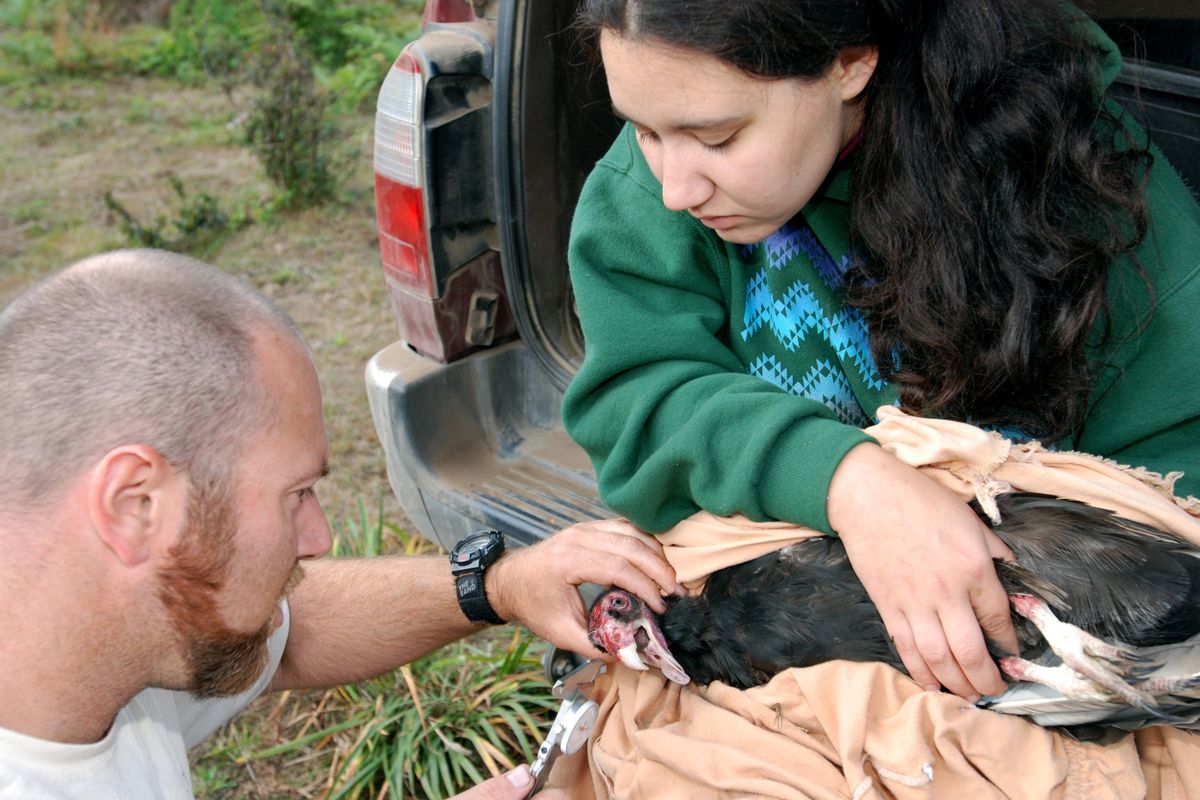Restoration efforts soar
Tribe hopes to introduce condors to historic range

ORICK, Calif. – The tribes of the lower Klamath River have since ancient times decorated themselves with condor feathers when they performed the dances designed to heal a world gone wrong.
“It can soar the highest, so we figured that was the one to get our prayers to heaven when we were asking for the world to be in balance,” said Richard Myers, a member of the Yurok Tribal Council and a leader in the revival of the tribe’s world renewal ceremonies.
Now the Yurok Tribe is using modern science in hopes of restoring condors, which have not soared above the northern coast of California since 1914.
If they establish that condors can survive in the area, and get federal permission to introduce birds from a captive breeding program, it would be the first restoration of the condor in the northern half of its historic range, and a stepping stone to condors soaring over Oregon and Washington. Lewis and Clark collected some as they trekked down the Columbia River.
With a $200,000 grant from the U.S. Fish and Wildlife Service, the tribe is trapping turkey vultures to test for lead poisoning from eating the rotting remains of deer and elk contaminated by lead bullets, and cutting plugs of blubber from dead sea lions to measure the legacy of DDT pesticides. Those tests will help determine potential toxic threats to condors.
Researchers from Oregon State University and the Oregon Zoo are computer-mapping areas throughout the Northwest where condors could nest.
“He was like the boss of all the birds,” said Myers. “At one point in time in our world, we know where the beginning of the world was. We call it Kenick. The birds and animals would all speak the same language. He was the first one. He was also the first one to go extinct for whatever reasons.”
The details of why condors went extinct in the Northwest are not clear. Tribal wildlife biologist Chris West figures that a big factor was commercial whaling and sealing, which deprived the birds of a major source of food washing up on the beach.
In an attempt to measure lead levels, Tiana Williams sat hidden and quiet in the hills above Orick, watching the stinking remains of roadkilled deer and raccoons that would draw turkey vultures into a trap.
After graduating from Harvard in biochemistry, she came home to work for her tribe.
“They are considered a sacred animal,” Williams said of condors. “You are never supposed to kill them. We use their feathers for ceremonies. If you get a feather, it has to be given by the bird. You have to find it on the ground.
“Condors being the first animal we bring back to Yurok ancestral territory is a really powerful thing to me, as the first step toward renewal of our land.”
After a bird struggled through a one-way wire entry into the trap, she threw a flannel sheet over it and held it gently in her lap. Biologist West inserted a needle in a leg vein, drawing blood to test for lead.
Lead poisoning is the leading cause of death for condors in the wild, said Chris Parish, condor program director for the Peregrine Fund, which breeds birds in Boise and releases them at the Grand Canyon.
To reduce the danger, the Peregrine Fund has worked with hunters to switch to nonlead bullets and bring in the gut piles of animals they shoot so they won’t be eaten by condors.
At last count there were 180 condors in the wild in North America, up from 23 in the 1980s, said Fish and Wildlife spokesman Michael Woodbridge. Zoos and captive breeding programs have 176. Wild birds soar over Grand Canyon National Park in Arizona, Zion National Park in Utah, the hills outside Ventura, Calif., the Big Sur area of California, and Baja California in Mexico.
The only condors on the North Coast have been stuffed for a century. One is at the Clarke Historical Museum in Eureka, Calif.. The other is at Eureka High School.
The Clarke Museum also has three condor dance feathers decorated with white deerskin and red woodpecker feathers from the Karuk Tribe, neighbors of the Yurok, who share many of their ceremonies.
With few old feathers surviving, and no condors in the wild to drop new ones, Myers has borrowed feathers from other museums and brought them to dances. Lead singers in the white deerskin dance wear condor feathers in their headdresses.
“We know the eagle – the bald one – is important,” said Myers. “The golden one is even more so. And the condor is above them.”